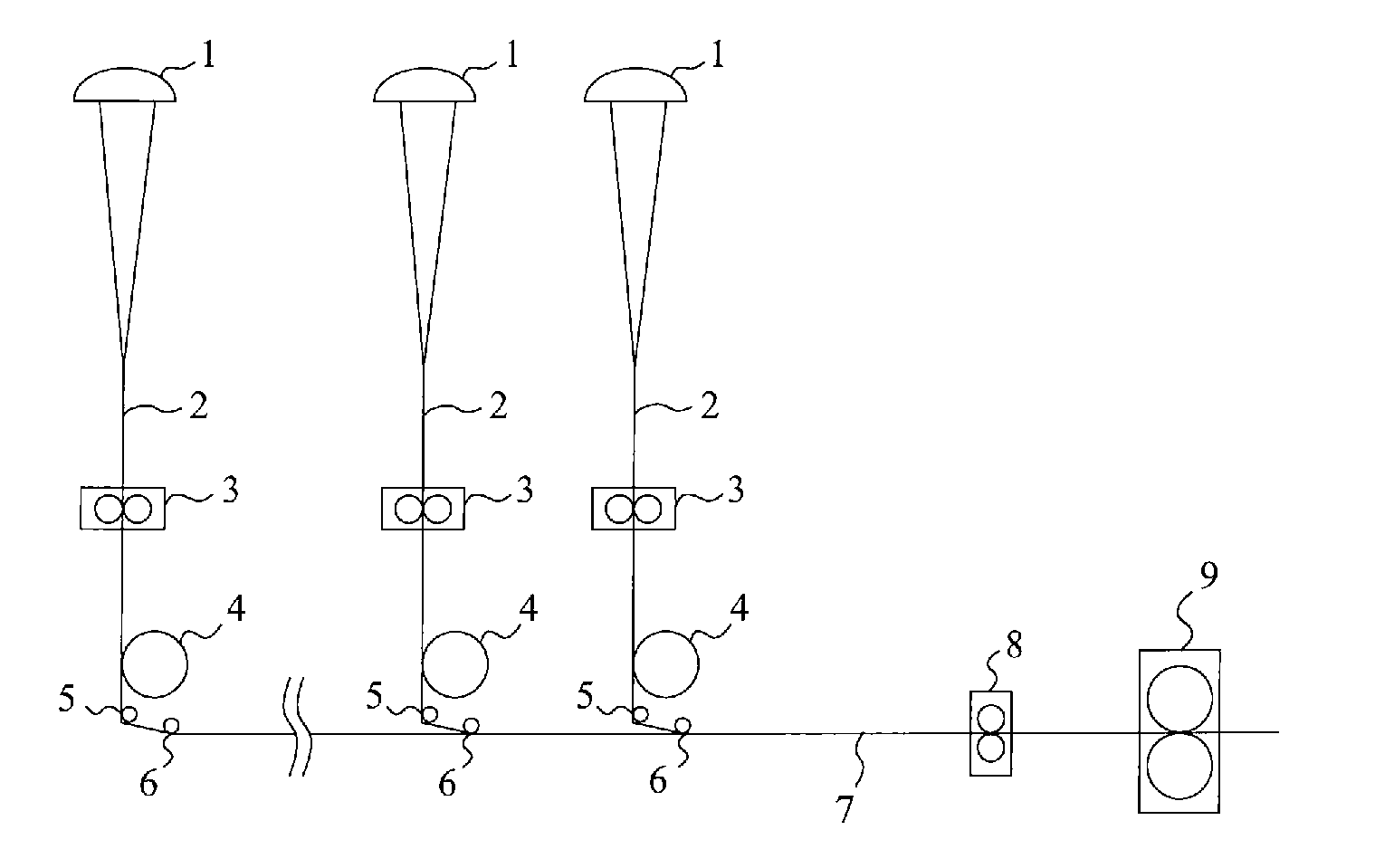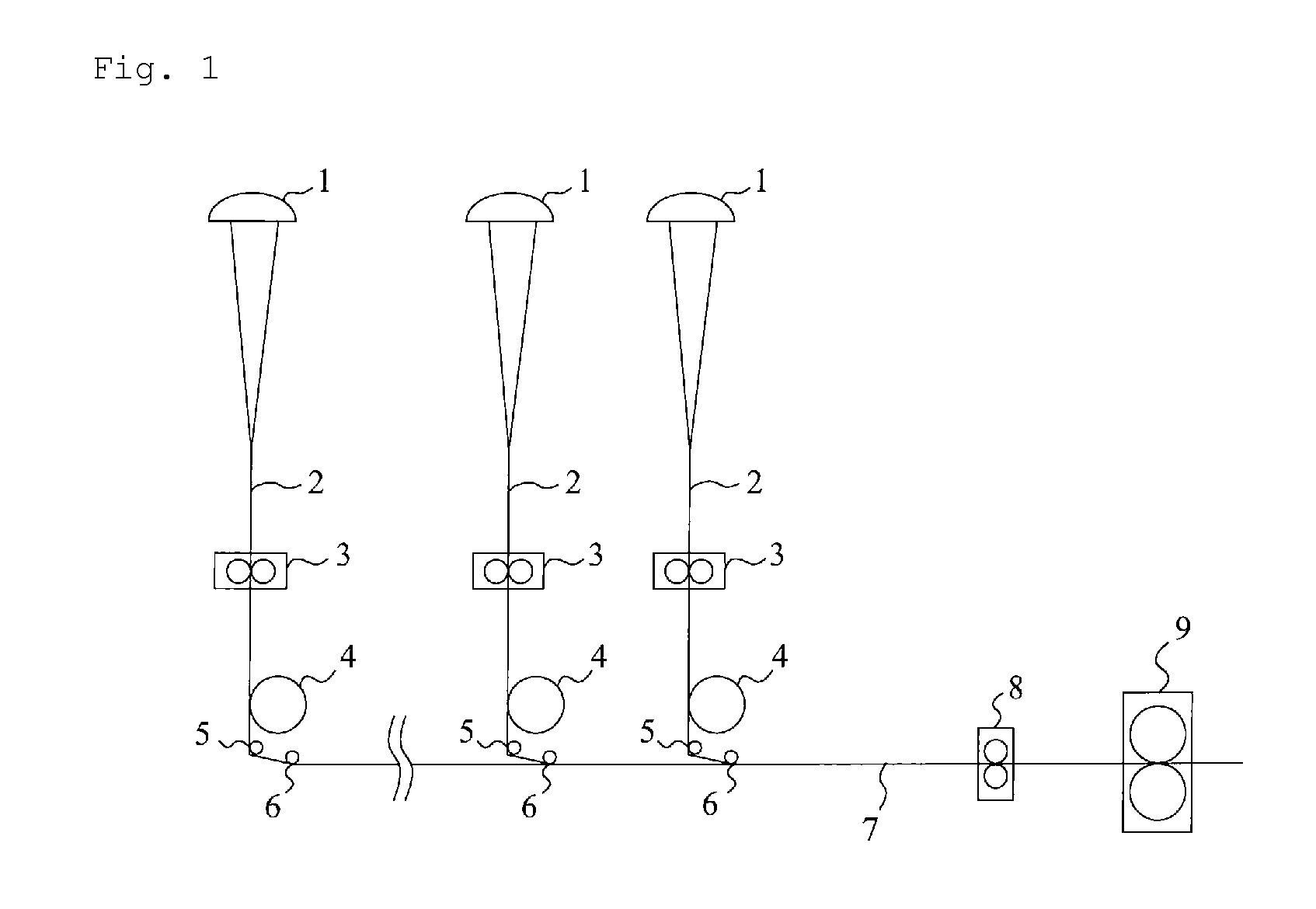Hydrophilized cellulose acetate tow band, and absorbent material produced using same
a technology of cellulose acetate and absorbent material, which is applied in the direction of vegetable fibres, cellulose/protein filament chemical after-treatment, fibre treatment, etc., can solve the problems of insufficient liquid-absorption properties of thin absorbent using cellulose acetate, large thickness of absorbent, and low liquid permeability rate, so as to maintain liquid permeability, improve liquid diffusibility, and improve liquid permeability
- Summary
- Abstract
- Description
- Claims
- Application Information
AI Technical Summary
Benefits of technology
Problems solved by technology
Method used
Image
Examples
preparation example 1
[0091]A textile oil (mineral oil, trade name DC-18, supplied by Matsumoto Yushi-Seiyaku Co., Ltd.) was tempered to 35° C., was combined with (diluted with) water (dilution water) tempered at 35° C., stirred, and yielded a textile oil emulsion having an emulsion concentration of 40 weight percent.
[0092]The textile oil has a phase inversion point of 50 weight percent. The dilution was performed at a dilution rate of 0.13 kg / min per kilogram of the textile oil at the phase inversion point. The emulsion had an average particle size of 0.199 μm. The prepared textile oil emulsion had a total luminous transmittance of 34.8% with respect to light at 850 nm, as measured at an emulsion concentration of 5 weight percent.
preparation example 2
[0093]A hydrophilizing component (polyoxyethylene sorbitan monolaurate, having an HLB value of 16.7, supplied by Matsumoto Yushi-Seiyaku Co., Ltd.) was dissolved in water and yielded a hydrophilizing agent aqueous solution having a concentration of 8.5 weight percent.
preparation example 3
[0094]A textile oil-hydrophilizing agent mixture was prepared by blending and mixing 30 parts by weight of the textile oil emulsion prepared in Preparation Example 1 with 100 parts by weight of the hydrophilizing agent aqueous solution prepared in Preparation Example 2.
PUM
| Property | Measurement | Unit |
|---|---|---|
| weight percent | aaaaa | aaaaa |
| weight percent | aaaaa | aaaaa |
| weight percent | aaaaa | aaaaa |
Abstract
Description
Claims
Application Information
 Login to View More
Login to View More - R&D
- Intellectual Property
- Life Sciences
- Materials
- Tech Scout
- Unparalleled Data Quality
- Higher Quality Content
- 60% Fewer Hallucinations
Browse by: Latest US Patents, China's latest patents, Technical Efficacy Thesaurus, Application Domain, Technology Topic, Popular Technical Reports.
© 2025 PatSnap. All rights reserved.Legal|Privacy policy|Modern Slavery Act Transparency Statement|Sitemap|About US| Contact US: help@patsnap.com


